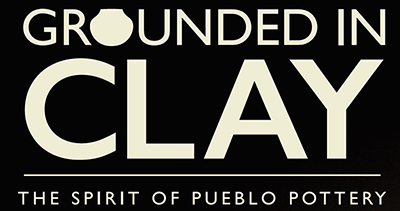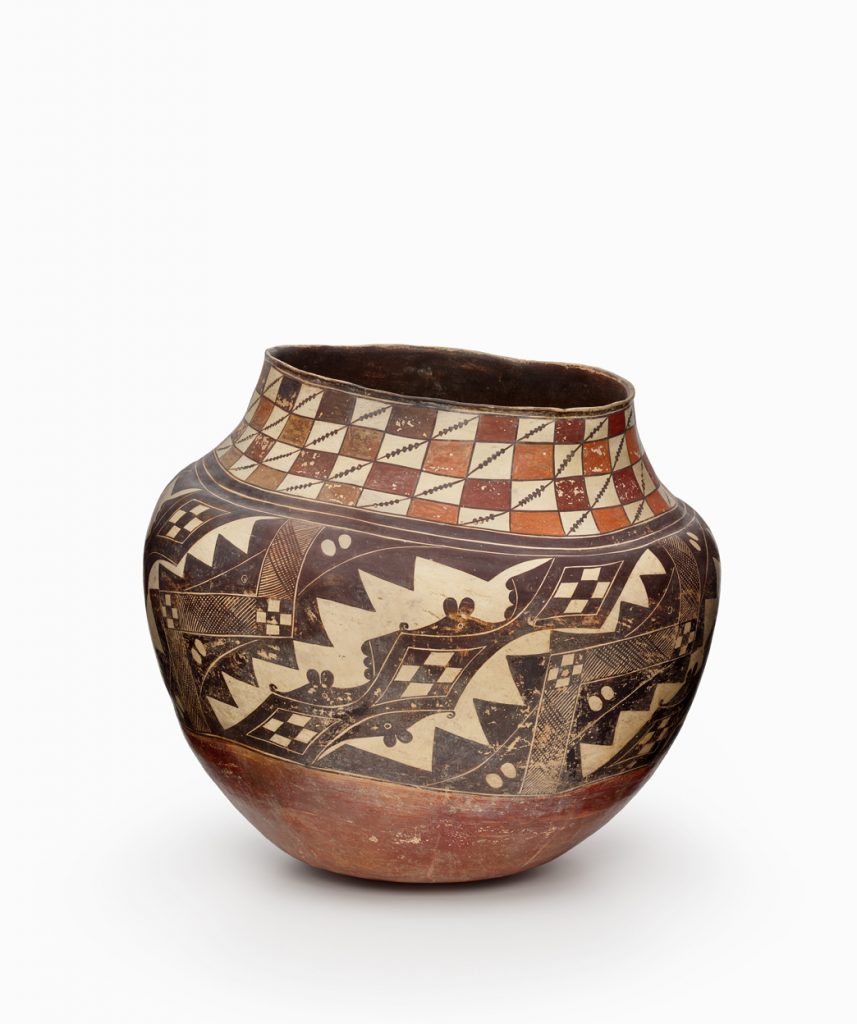Brian Vallo
Acoma
Brian D. Vallo is a member of the Pueblo of Acoma tribe in New Mexico, and served as Governor in 2019–21. He has more than thirty years’ experience working in areas of museum development, cultural resources management, repatriation of ancestors and cultural patrimony, historic architecture preservation, the arts, and tourism. He currently serves as an advisor to the Field Museum, Chicago, and the de Young Museum, San Francisco. A self- taught painter and potter, he is inspired by the natural environment and elements, which he incorporates into his multimedia paintings.
Brian chose the following for the Grounded in Clay exhibit:
Prominence and Prestige
On a visit to the Vilcek Foundation in December 2019, I was immediately drawn to this large Acoma storage jar, sitting prominently among other historical Pueblo pottery from the foundation’s collection. I “knew” the jar and had anticipated reconnecting with it at some point in my lifetime. Thirteen years had passed since my first, brief encounter with the magnificent jar at an auction house in San Francisco. On ancestral lands of the Lenape, now Manhattan, I was blessed with the opportunity to hold and reconnect with this beautiful item of my ancestry. Its stately character and design mesmerized and grounded me. Having the privilege of holding the jar, connecting with its form and construction, I spoke to it in my Acoma language: I introduced myself, shared words of admiration, and gave thanks for the opportunity to meet again.
Only the maker knows the prayers, songs, and intended use of this exquisite Acoma storage jar. Did the potter make the large vessel for her own use? Was the jar made for ceremony? Was it commissioned by a clan group or society for a specific purpose? Whatever the purpose, this jar holds many stories from its time at Acoma and its unintended travels. Signs of wear, the subtle patina, and the condition of the interior indicate significant use. Storage jars of this size are usually not moved around much. This jar was probably a fixture in a food-preparation area or in a storage room with only minimal exposure to sunlight. I imagine that it contained dried meat of wild game, dried ears of Acoma white and blue corn, or maybe even loaves of wheat bread.
To make a jar this big requires a good amount of prepared clay and mineral paints. The master potter had the skill not only to form a jar of this size, but also to carefully execute other steps in its creation, including a successful outdoor firing. The designs on both the neck and the body are classic Acoma pottery patterns, depicting clouds, rain, and cornfields. This jar sings loudly to me through its design and its lived experience at Acoma. While it now sits empty, absent of foods that sustain life at Acoma, it is a visual feast for those who have the opportunity to experience its splendor.

